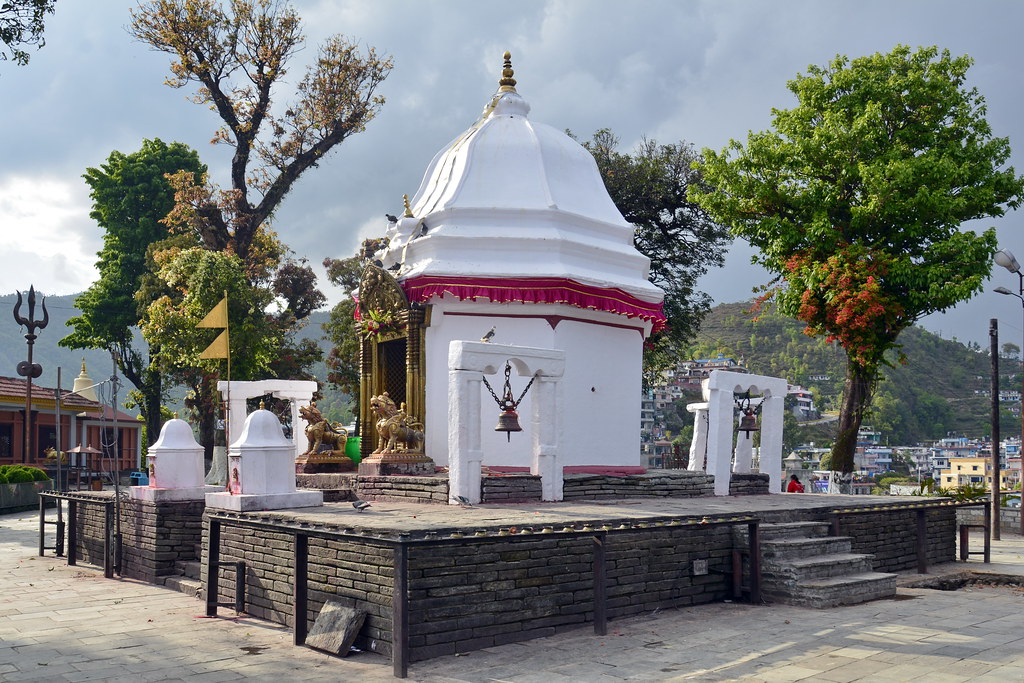Bindhabasini Temple: The Sacred Soul of Pokhara
Perched atop a small hill in the heart of Pokhara, Bindhyabasini Temple is more than just an ancient shrine—it’s a place where faith, history, and breathtaking natural beauty intertwine. Overlooking the bustling city, with the majestic Annapurna range standing guard in the distance, the temple serves as both a spiritual retreat and a cultural landmark.
Bindhabasini Temple is one of the oldest temples in Pokhara, believed to have been established by King Siddhi Narayan Shah in the 17th century. Dedicated to Goddess Bindhabasini, a manifestation of Durga, the temple is a revered site for Hindus, attracting devotees who come to offer prayers, perform pujas, and seek blessings. The goddess, enshrined in the temple’s sanctum, is said to be a powerful protector, fulfilling the wishes of those who pray with a pure heart.
For the locals, Bindhabasini Temple is not just a religious site but a part of their everyday lives. Each morning, the temple awakens with the sound of bells and the scent of burning incense. Priests perform rituals while devotees line up, carrying trays of flowers, tika, and offerings. The chants of prayers mix with the crisp mountain air, creating an atmosphere of profound peace. Throughout the year, the temple hosts numerous religious ceremonies and festivals, the most significant being Dashain and Teej. During Dashain, the temple grounds are filled with families, prayers, and the echoes of traditional music. Teej, a festival dedicated to women, transforms the temple into a sea of red as married and unmarried women gather to dance, sing, and offer prayers for marital happiness and well-being.
A Spiritual Heaven with a View
One of the most captivating aspects of Bindhabasini Temple is its location. The temple sits on a vantage point that offers a panoramic view of Pokhara city, the lush green hills, and the shimmering waters of Phewa Lake in the distance. On clear days, the snow-capped peaks of Machhapuchhre and Annapurna seem close enough to touch. The sunrise from the temple is a sight to behold—the first golden rays of light touching the Himalayan giants while the city slowly wakes up below.
For visitors, reaching the temple is an experience in itself. The climb up the stone-paved stairs feels almost symbolic—a gentle journey towards spiritual reflection. Once at the top, a deep sense of serenity washes over you. The rustling leaves, the soft flutter of pigeons, and the distant murmur of city life below create a rare harmony between devotion and nature.

Bindhabasini Temple is not just for the deeply religious; it’s a sanctuary for anyone seeking peace, introspection, or simply a moment away from life’s chaos. Couples visit to receive blessings for a happy marriage, elders come to relive childhood memories, and travelers find themselves drawn to its tranquility. The temple is a meeting point of generations, where stories of devotion are passed down like sacred mantras. Even if you are not religious, spending a quiet moment here—watching the fluttering prayer flags, observing the faith of the people, and feeling the gentle mountain breeze—will leave you with a sense of connection, as if you’ve touched something eternal.
Bindhabasini Temple is not just a structure of stone and faith; it is an embodiment of devotion, history, and the deep-rooted spiritual fabric of Nepal. It is a place where prayers are carried by the wind, where the past and present meet in a delicate embrace, and where every visitor—pilgrim or wanderer—leaves with a lighter heart.
So, the next time you find yourself in Pokhara, take a detour from the tourist trails, climb those ancient steps, and let the Bindhabasini Temple whisper its timeless stories to your soul. Whether you come seeking blessings or simply a peaceful moment, this temple will embrace you in its sacred silence and remind you of the beauty that exists in both faith and nature.
